The Key to Preaching in a "Volatile, Uncertain, Complex, Ambiguous" World
Photo by Jorge Reyna on Unsplash
I met a fortune-teller at a clergy conference a few years ago.
I don't mean a fortune-teller who looks at tea leaves, crystal balls, or forehead heights.
I mean one who forecasts the fate of humanity by making sense of the present days' statistics, signs and times: Bob Johansen, Ph.D.
It's Dr. Johansen's job to look down the road about a decade at a time.
With his background in the sociology of religion, and now as Distinguished Fellow at the Institute for the Future in Silicon Valley, he looks at what is and what was, and makes sense of that data to look ahead.
The Future is now: "Volatile. Uncertain. Complex. Ambiguous."
I felt blessed to hear Dr. Johansen in person and have since read his book, The New Leadership Literacies: Twisting Toward Distributed Everything.
At the conference, it was astonishing to hear Dr. Johansen describe the sea-change we were about to see in the internet that has now come to pass: Artificial Intelligence.
It was also relieving to learn that my sons' mind-boggling ability to succeed at multi-tasking between homework, conversations, songs, and videos (properly called "Constant Partial Attention”) was a necessary skill-set for their future employability!
But what most caught my attention most was this: his claim that the world is only going to become more "volatile, uncertain, complex and ambiguous" (VUCA).
Using this descriptive expression, he wrote that we’re moving into:
“an increasingly VUCA world" (p. 2).
Well, my friends, the future is now.
We need only look at the volatility of the Middle East, the uncertainty of our democracy, the complexity of the worldwide economic network, and the ambiguity about the Church’s voice in today’s world to see we have entered a VUCA world.
Dr. Johansen’s prediction has come to pass.
The Essential Counter-Narrative: Hope
For all that, what was even more surprising was Dr. Johansen's outline for a counter-narrative: hope.
The upside, he said, is that this time of chaos is fertile ground for creativity, innovation, and a world that can become better than it is now.
He writes:
"I've come to understand that [our VUCA world] does have a hopeful side: volatility leads to vision; uncertainty to understanding; complexity to clarity; and ambiguity to agility" (p. 5).
Not only does Dr. Johansen say a VUCA world has this hopeful side, but crucially, he argues:
"Hope will be the key variable. Hope has always been important, but it is likely to be much more difficult to achieve over the next decade....Leaders in the future will be in the seeding hope business" (137-138).
Fortunately, we preachers are in the right job! We love hope!
You remember the wonderful verse from I Cor. 13: "Love never ends"?
How about "Hope never ends!"
In other words, as preachers, we need to preach hope that leads people to a new Promised Land, because otherwise, our collective chaos, fear, and despair could make Sheol look like a beach vacation.
Hope will be the key message.
Hope will cast the vision for a currently unimaginable Promised Land characterized by a "new normal":
actual dignity created—one compassionate human being to another—in the workplace, school, healthcare, economic opportunities, and the environment
heartfelt respect shown—one compassionate human being to another—to all ethnicities, peoples, nationalities, traditions, and religions.
Hope offers a new shalom for all without exception
This is the Gospel message, after all.
What is lost will be found, what is sick will be healed, what is broken will be redeemed.
Every human story, no matter how "volatile, uncertain, complex, or ambiguous," finds its resolution in the hope of Christ.
For that reason, we can nurture and offer hope in every sermon, every Sunday, in every circumstance.
If we focus only on the volatility, uncertainty, complexity, and ambiguity of the world, our listeners may forget the Truth of grace, hope, and love accomplished by Jesus on the cross.
They may be tempted to lose heart and cease to usher in God's reign on earth as it is in heaven.
We always get to preach the whole story: Whenever there’s a Good Friday, Easter always follows on Sunday where:
Light illuminates darkness,
Salt seasons a flavorless world,
Joy laughs at death,
And our listeners are equipped to go and do likewise.

